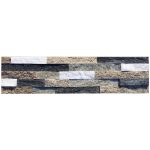Introduction:
Cultured stone walls have been a staple in architectural design for centuries, providing a timeless elegance that enhances the beauty of any space. These walls are made from a combination of natural and man-made materials, creating a durable and versatile building material that can be used in a variety of applications. In this article, we will explore the history, benefits, design options, and installation process of cultured stone walls, highlighting their enduring appeal and versatility in modern architectural design.
History of Cultured Stone Walls:
Cultured stone walls have a rich history that dates back to ancient civilizations where natural stone was used to create impressive structures such as the Great Wall of China and the pyramids of Egypt. Over time, the process of creating stone walls evolved, leading to the development of cultured stone as a more affordable and sustainable alternative to natural stone.
The modern concept of cultured stone walls emerged in the mid-20th century as a way to replicate the look and feel of natural stone using a combination of cement, aggregates, and pigments. This innovative approach allowed for greater flexibility in design and installation, making cultured stone walls a popular choice for both residential and commercial projects.
Benefits of Cultured Stone Walls:
There are numerous benefits to using cultured stone walls in architectural design, including:
1. Cost-Effectiveness: Cultured stone is generally more affordable than natural stone, making it a cost-effective option for those looking to achieve the look of stone without breaking the bank.
2. Durability: Cultured stone is highly durable and resistant to wear and tear, making it a long-lasting building material that requires minimal maintenance.
3. Versatility: Cultured stone walls come in a wide range of colors, textures, and styles, allowing for endless design possibilities to suit any aesthetic preference.
4. Lightweight: Cultured stone is lighter than natural stone, making it easier to transport and install, while still providing the same aesthetic appeal.
5. Eco-Friendly: Cultured stone is a sustainable building material that reduces the environmental impact of traditional stone quarrying, making it a more environmentally friendly choice for eco-conscious consumers.

Design Options for Cultured Stone Walls:
One of the key advantages of cultured stone walls is the wide variety of design options available to architects and designers. Cultured stone can be molded and shaped to create intricate patterns, textures, and finishes that mimic the look and feel of natural stone. Some of the popular design options for cultured stone walls include:
1. Stacked Stone: Stacked stone walls feature tightly packed stones that create a rustic and natural look, perfect for adding warmth and texture to any space.
2. Brick Veneer: Brick veneer walls offer a classic and timeless appeal, providing a traditional aesthetic that complements both modern and traditional architecture.
3. Limestone: Limestone cultured stone walls exude elegance and sophistication, with a smooth and refined finish that adds a touch of luxury to any setting.
4. Slate: Slate cultured stone walls feature a distinctive texture and color palette, creating a bold and dramatic statement in any room.
5. River Rock: River rock cultured stone walls showcase a natural and organic look, with smooth river stones set in a random pattern to create a unique and eye-catching design.
https://www.fs-slate.com of Cultured Stone Walls:
The installation process of cultured stone walls requires careful planning and attention to detail to ensure a seamless and durable finish. Here are the basic steps involved in installing cultured stone walls:
1. Surface Preparation: The surface where the cultured stone will be installed must be clean, dry, and free of any debris. A moisture barrier may also be applied to prevent water damage.
2. Application of Scratch Coat: A scratch coat of mortar is applied to the surface to create a rough texture that helps the cultured stone adhere to the wall.
3. Setting the Stones: The cultured stones are carefully placed on the wall in the desired pattern, ensuring a tight fit and proper alignment.
4. Grouting: Once the stones are set, grout is applied to fill the gaps between the stones and create a cohesive look.
5. Sealing: Finally, a sealant is applied to protect the cultured stone walls from moisture and stains, ensuring their longevity and durability.
Conclusion:
Cultured stone walls continue to be a popular choice in architectural design for their timeless elegance, durability, and versatility. With a wide range of design options and installation techniques available, cultured stone walls offer endless possibilities for creating stunning and unique spaces that showcase the beauty of natural stone. Whether used in residential homes, commercial buildings, or outdoor landscapes, cultured stone walls are sure to make a lasting impression and enhance the aesthetic appeal of any environment.
